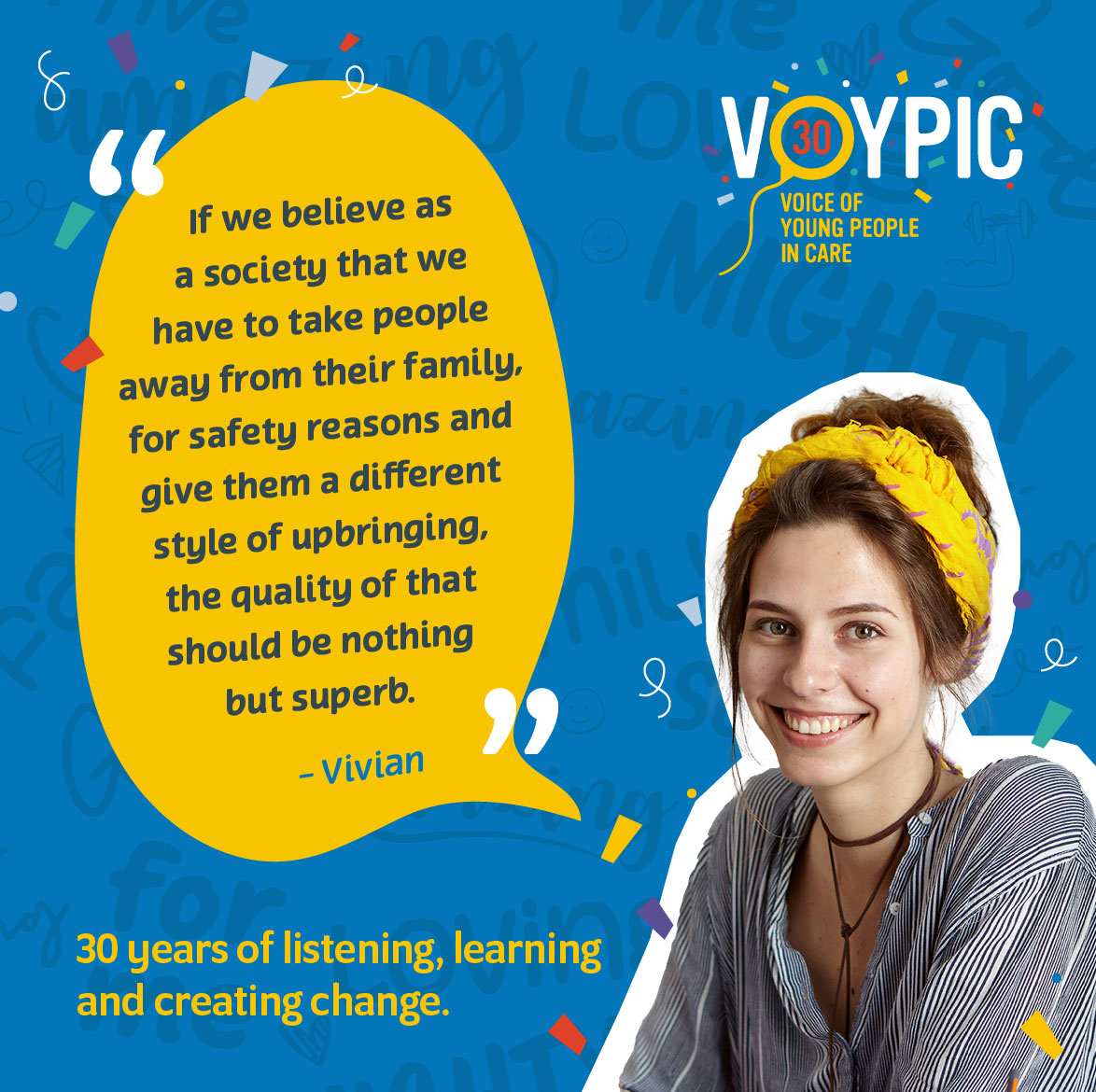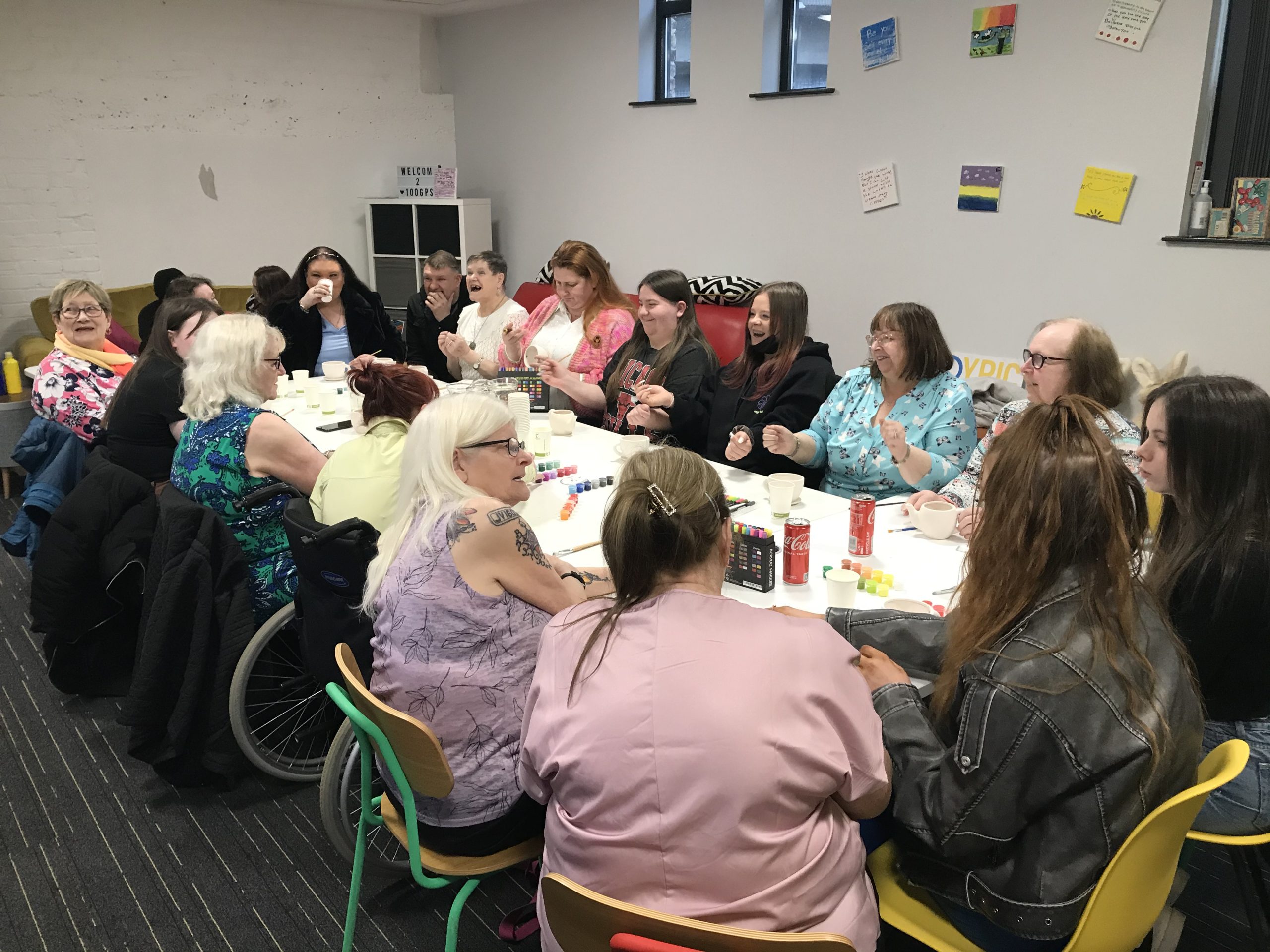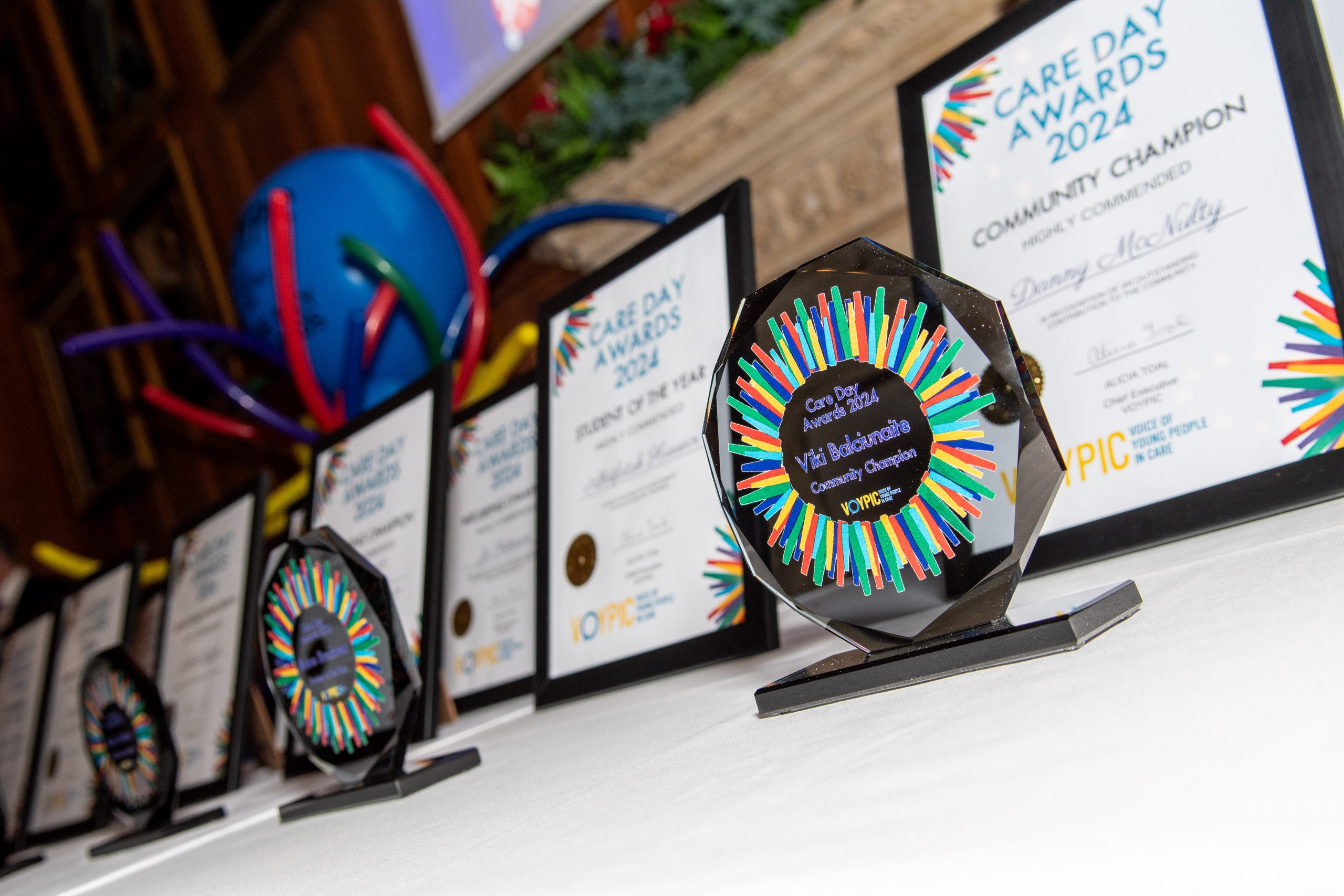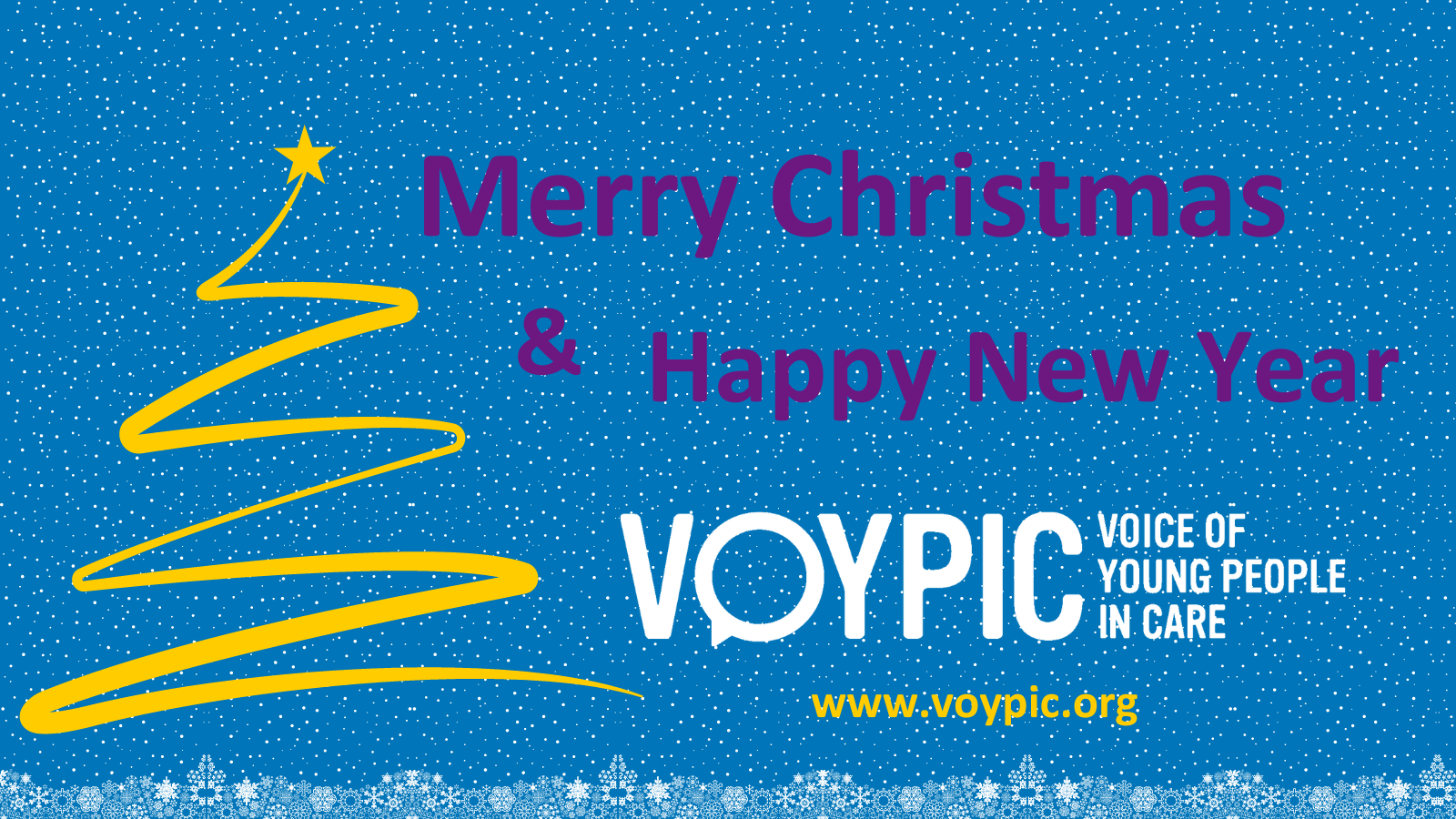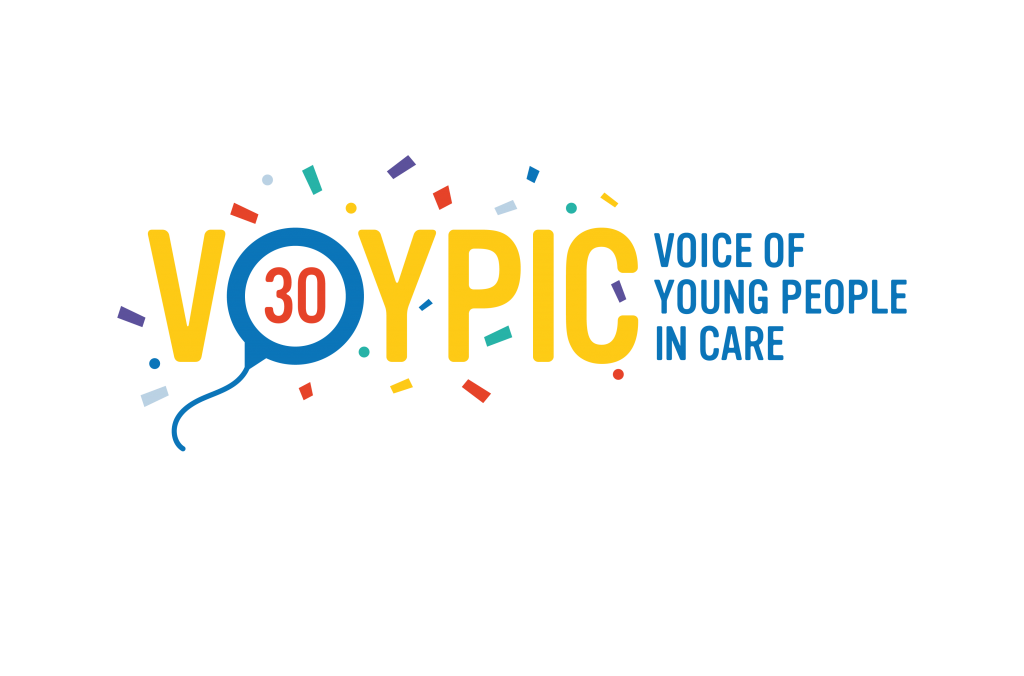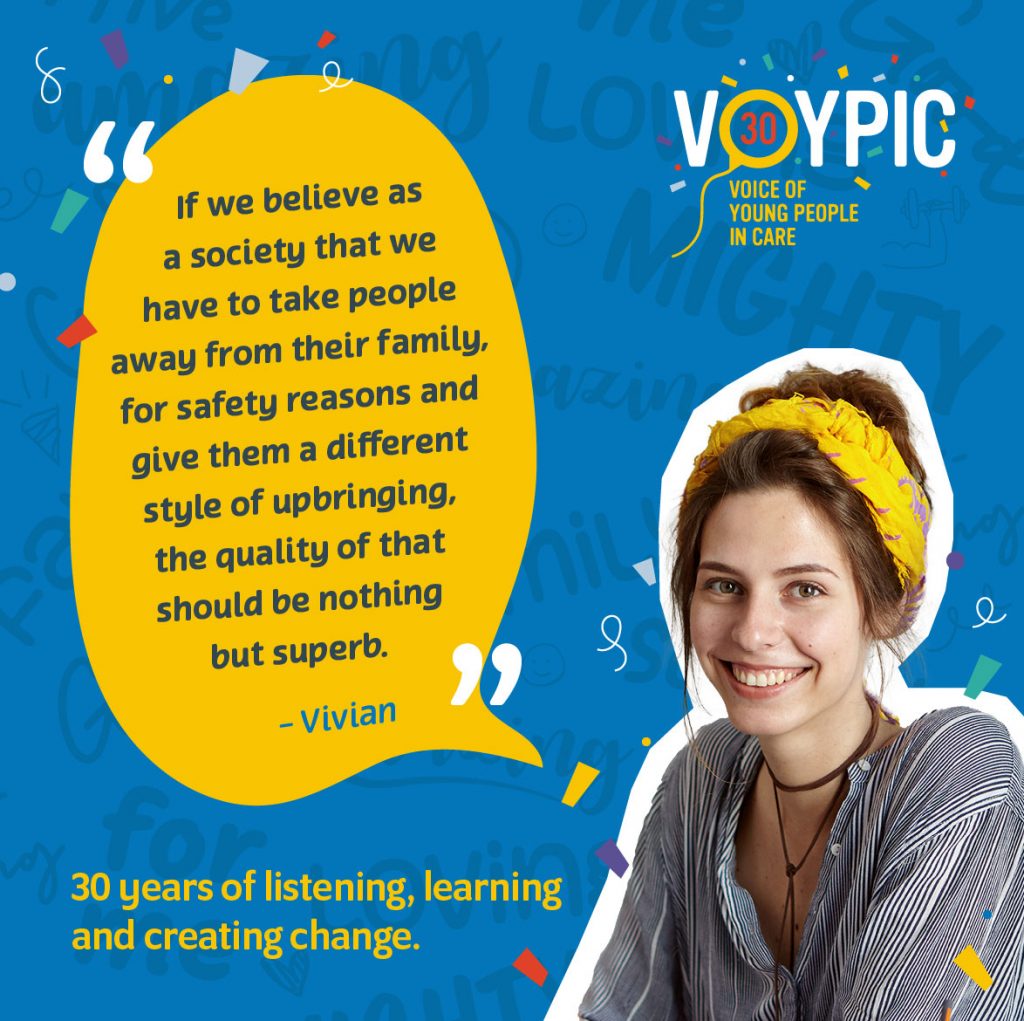
Vivian was one of the founders and original CEO of VOYPIC. She has been a strong advocate from the very beginning and her passion for VOYPIC and her commitment to young people is inspiring.
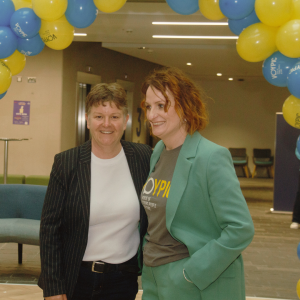
What was the driving force behind VOYPIC?
I think to get the driving force behind VOYPIC, you have to go a couple of years earlier. And around that time in 1991 you would have had the ratification of the UN Convention on the Rights of the Child. So there was a lot of focus at that time in relation to looking at children’s rights. At that time I worked for Save the Children Fund and my job was a social action worker and that was about how you would work with disenfranchised groups and vulnerable people and try to put them at the centre of decision making. Around that time, I think there was a lot of talk, you know, people were beginning to rethink about our children. You know, where are children and young people in the conversation? What is actually going on? And quite an impetus was around the UN convention. There was for me in my work.
Then, at that time, there was an article by a woman called Helen Taylor and she worked for Barnardos at the time and she was supporting young people. She did this article and she was asking the question, doing a call to action. And the call to action was really around where are our children in care and where is the voice for children in care? It didn’t exist in N.I. and there was a huge gap. You could see that there were other developments happening in Scotland, in England, and in Wales. Around that time as well there were quite significant reviews into care from different jurisdictions where things had gone wrong and why weren’t children heard and why they were silent. So, when Helen had written this article she had really asked for a call to action and to bring people together. At that point, what it was about was a reach-out. A meeting was called and those who had read it in childcare news really mobilised and so the first meeting of professionals was held on 2 July 1993. I attended that meeting along with people who are about in the sector now as well.
So, there were different organisations, there were statuary people, there were academics like John Pinkerton, there were organisations like Save The Children Fund, Barnardos, different people coming from children’s homes. We had realised that there just was a complete absence of children and children being heard in relation to care. And really, when you think about care, someone’s removed from their family, taken into the care of the state, and all the decisions that are made about them are really made through legislation and policy. It was trying to mobilise like-minded people, but I also think, in the backdrop to that, was the UN convention on the Rights of the Child, because that was the motivation for my organisation at the time, Save The Children Fund.
So, that to me I think was what was around and why I got involved in the very beginning of VOYPIC away back in ‘93. Now, where that went to, in that first meeting, was that, if you are going to find a way to give children their voice and young people their voice, in care, you actually have to do it from the very beginning. You know, how you act and how you build an organisation or build a model of practice, gives you the organisation you’re going to get in the future. So, what we decided then was not to move forward as groups of professionals, until we had a meeting with young people and asked those young people, do they want this, what do they want, what would they like to see happening and then support them to do that. And then those young people came together on 21 October 1993 and that, from day dot, has always been VOYPIC’s birthday.
What was the landscape like for children and young people in care when VOYPIC was founded? And how has it changed now?
The landscape is very different. I found this a really interesting question because it was quite a challenge to think back. You know, we’re thinking back thirty years! When I actually thought back to my own work, I’m a social worker, I qualified in 1987, and one of my first jobs, full time job, was working in the justice system. And I worked in a place called Whitefield house, which later went on to become the youth justice agency, as it is now.
At that time, my job was to work with young people. An example of this was that some young people who were extreme school non-attenders could end up, receiving through the court, a 1 to 3 year training school order and be placed in training school. Now, that’s massively different to where we are now and how we see children. Particularly, when you think of this pandemic, because that’s what struck me. You know, I worked with young people who really struggled in school because of their home circumstances. Struggled in a lot of things. And at that time we had hundreds of children in training schools. Whereas if you look at Lakewood [secure care centre] and Woodlands [youth justice centre] now, we’re down to 10s. I mean maybe 20, 30 at the most. Whereas way back thirty years ago, it could be a couple hundred.
The other thing that’s different is that at that time I had worked in children’s homes and children’s homes were much larger and you may have had over a dozen young people in the one children’s home. And sometimes, some of those young people may have had to share a room – three or four. And when they became 18 there was no support in leaving care like we have now. There was no legislation. So it was like, they said goodbye and then they were on their own. Very on their own. They may have come back if they’d had a good relationship with the children’s home. But if they didn’t, they didn’t. Or if they left their foster parent, they didn’t. They didn’t have what we have now, which is the leaving care legislation. Where we have leaving care teams, where we have support, partnerships with the housing executive, a policy of looking at housing and employment. All those sorts of things were very embryonic during the 90s, really when the Labour government had come in and lots of things changed.
But around the time of the start of VOYPIC, that wasn’t there.
You’re also talking about voice. You know, back then, I can remember as a worker, doing reviews and children weren’t in the meetings. Their parents weren’t in the meetings. And there was very limited involvement in court. They turned up but were they able to participate as much? And on policy decisions and development of that or legislation, it was very, very rare that that happened. And when you look at it now as to where we’ve come to. And remember VOYPIC started only two years after the UN convention was ratified, so people are only learning about this stuff and really trying to find their voice. They were probably very silent. Very vulnerable. Because I have always believed that unless you can speak out, you’re not protected. And I think now, where we have this organisation, where the government wouldn’t dream of bringing something in about children in care without asking them first. All those things did not exist in 1993.
What challenge did you face in the early days of VOYPIC? What challenges still need to be overcome?
When I look back at the challenges, there are different ways of looking at it, and I’m only going to answer it in respect of young people, because I could go on as Chief Executive of things. But actually, when I really thought about your question, the thing that scared the bejesus out of me the most, was not living up to the young people’s expectations. Because we had asked them and offered them an opportunity to speak. To come in, to have this conversation and to say that the world is ready for them to speak and if we had failed at that, we’d have lost the opportunity.
What I also thought about, when you think about offering somebody an opportunity, you need to have the resources. And having the money at that time and the investment in VOYPIC was minimal. You needed staff who would work with young people to build their confidence, to build their skills to be able to do these things. We had very little of that. We needed to make sure that decision makers would meet with us and take us seriously. So, there was a big thing, I suppose, the challenge for us was, do you know that comment, ‘Be careful what you wish for’. The system wanted children and young people to speak. But the young people had never had this opportunity before. So, they were raw, unedited, real, angry, upset. Their story of care was really different from worker’s stories of care. So when they were asking for that and they get all this emotion, this disappointment at everything going on in the system, could the system actually manage it. The bit for me was, ‘be careful what you wish for’, was the system ready?
In the background, as the Chief Executive, you had to do a lot of work. I mean, I had to have lots of conversations with the system, lots of conversations with managers, lots of conversations. Because what was happening is this emotion was coming out and you know, it was very negative and in those very early days, even before I was Chief Executive, I was a development worker doing this stuff, and it was really hard to navigate between two things. Because even though people think they want to hear things, they’re not ready to hear it and they’re not ready to do anything with it. And then the last thing I thought was a challenge was, What the heck do we do if no change happens? You know, are we going to fizzle out? Are people going to walk away from this? So that was the stuff for me at the very beginning was that you didn’t fail the young people. You got enough resources, you had really skilled staff, you prepared the system for the conversation. Because these young people were real. I had to do a lot of work nearly translating and reinterpreting what young people were saying, because sometimes it was coming out as just this huge emotion. And then people saying, ‘Well what do we do with that?’.
I think there’s huge challenges now. Because, if you think about what is different and what is VOYPIC? VOYPIC is an independent voice action organisation. It means it doesn’t provide direct care services. Under financial constraints, what’s the first thing the government does? They pull everything back to do the minimum. So, they make cuts in places and they only fund direct services. VOYPIC can’t get into providing direct services, because then it loses its independence and its voice.
So the first thing I noticed before when there were cuts over the time that I was involved in VOYPIC was that money for engagement and involvement was seen to be extra and frilly and not core. When in actual fact it should be core. And so the challenge now is if you really want to involve people in changing the system, engagement and involvement is time intensive and resource intensive and you have to resource it.
And the other thing is, if the government wants to push something through, you will not fund the people who may potentially have a different view from you. So it’s very easy to say we will just put money into direct services because we’re broke. When in actual fact, the services you’re providing could be the wrong ones because you’re not investing. You should always invest in an honest broker. You should always invest in those people who are living in the situation and that’s the challenge right now. This is a very difficult time financially. And VOYPIC, to stay its DNA, needs to ride through this and needs to stay independent and needs to get funded to make sure that it is keeping the government in line and its systems and processes going and having those conversations. It needs to stay the course.
What do you hope VOYPIC achieves in the next 30 years?
I thought to myself, 30 years ago, did I think that this organisation would be where it is now? And has it reached that? And I have to say it has been immense. 30 years from now, I think the care system has to really fundamentally change and actually, if we believe as a society that we have to take people away from their family, for safety reasons, and give them a different style of upbringing, the quality of that should be nothing but superb. But the design of it should be done with people who’ve actually lived through the system. I don’t believe, at this point, that really, children and young people are fully setting the destiny of what care should look like. I don’t know what it will look like, but I have this feeling it should look fundamentally very different from what it is now. And also, I think that, for me, people who have been care experienced are part of a community and that community needs to be global.
We started with Care Day in 2016, but there needs to be much more globally. And having the opportunity and the way people communicate now through social media and through different things, there’s a new and different way of doing that and somehow, what I want to see in the next 10 years, is a world global convention or conference on looking at what works best in different places and why we have to fundamentally change everything. And what that’s about. So I would see VOYPIC as a much more global organisation. It always has been at the cutting edge of doing different things, but now it’s time to reach up and out and be really strong about that.
If you had to describe VOYPIC in one word, what would it be?
Family

